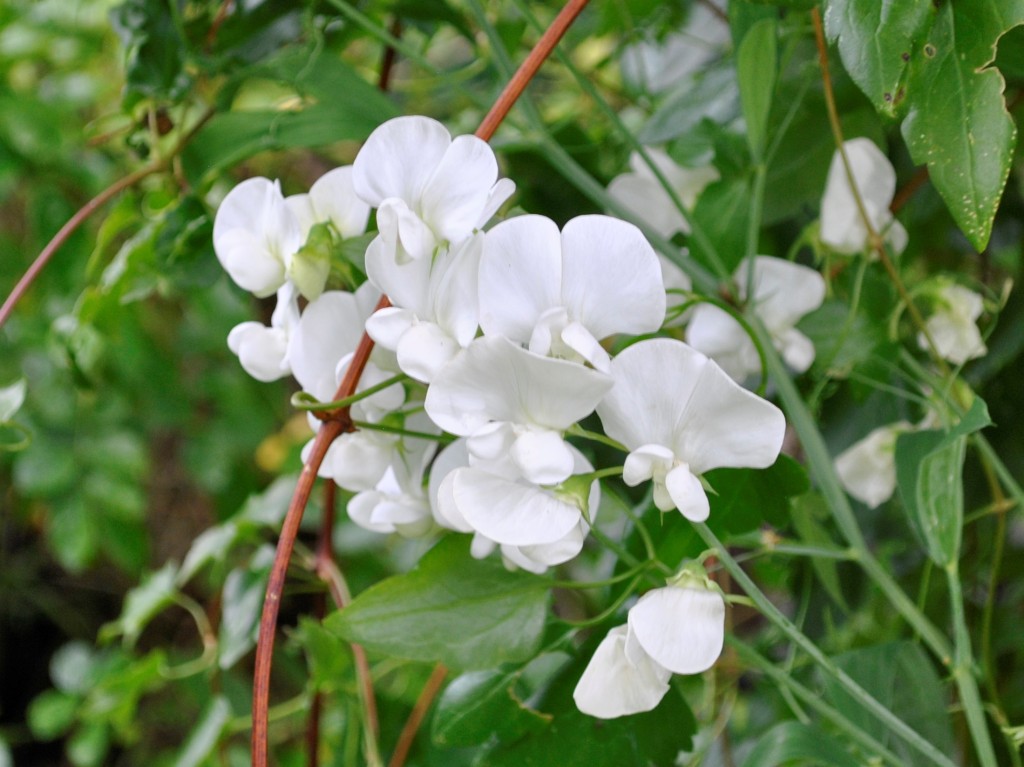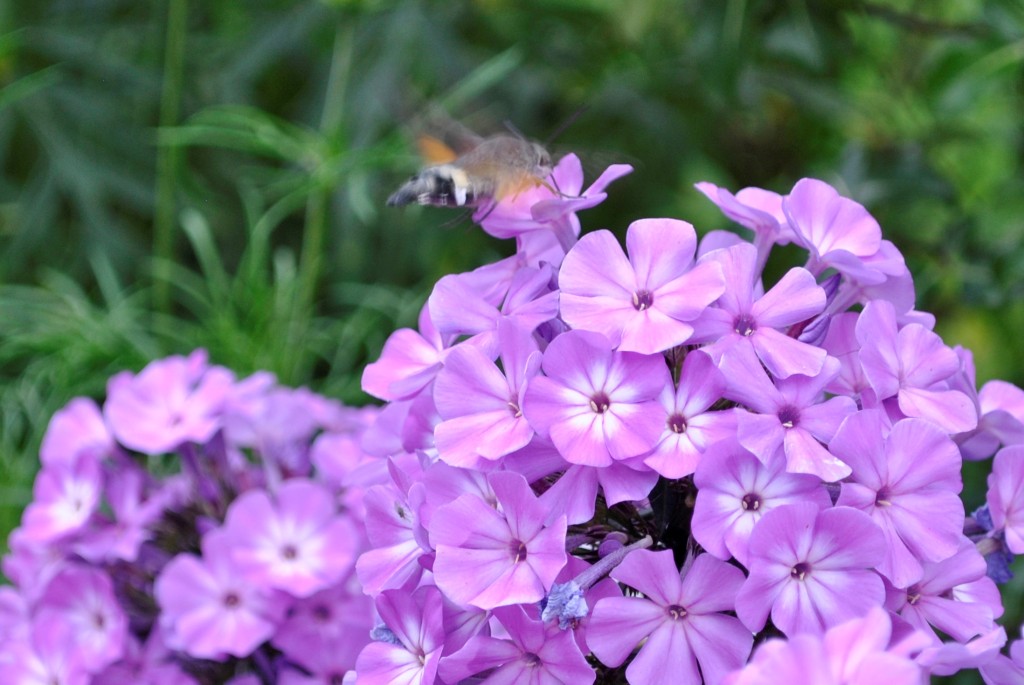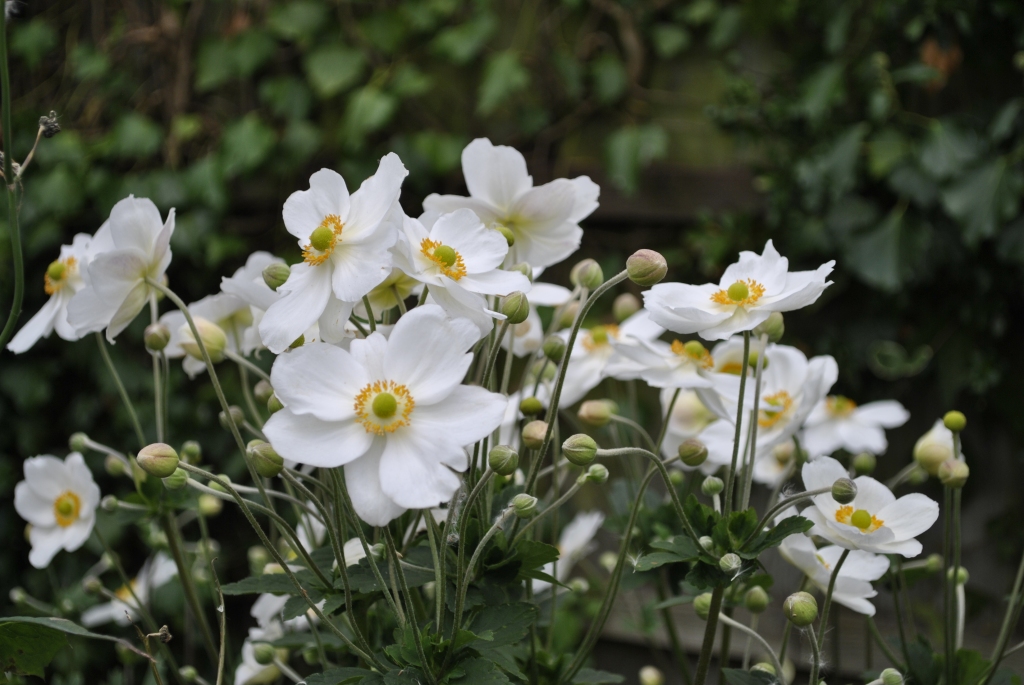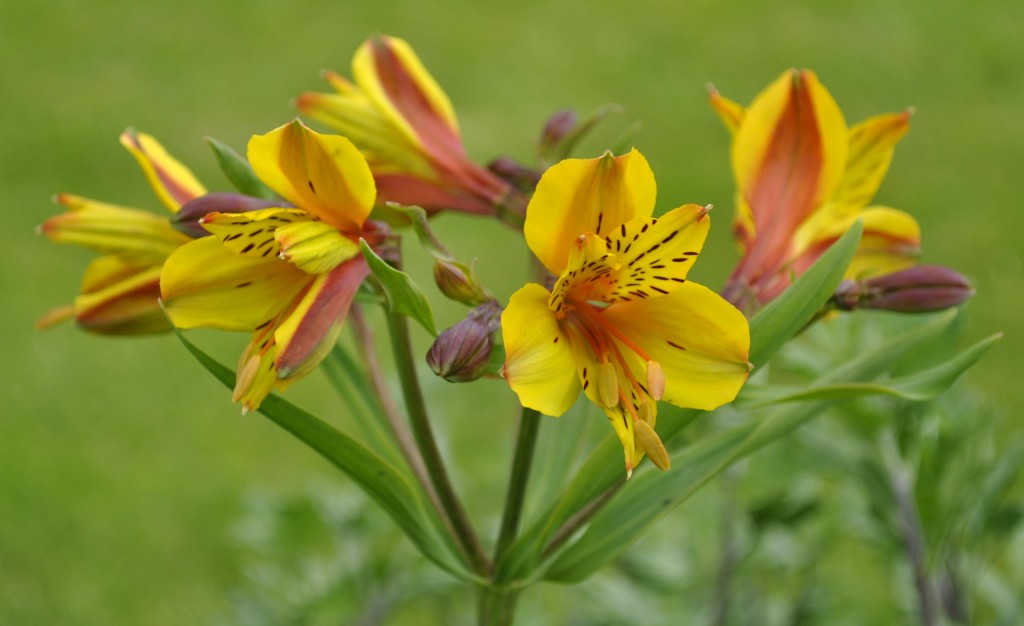
Six lovely things for a rainy Saturday, starting with Alstroemeria ‘Princess Sophia’, of which I am a Plant Guardian for Plant Heritage. This means that, for some reason, known only to the Nursery trade, this cultivar has gone out of favour and is no longer being sold. It is in danger of becoming obsolete, so we try to stop that happening by propagating and passing plants to others to look after and do the same. Worth keeping I think.
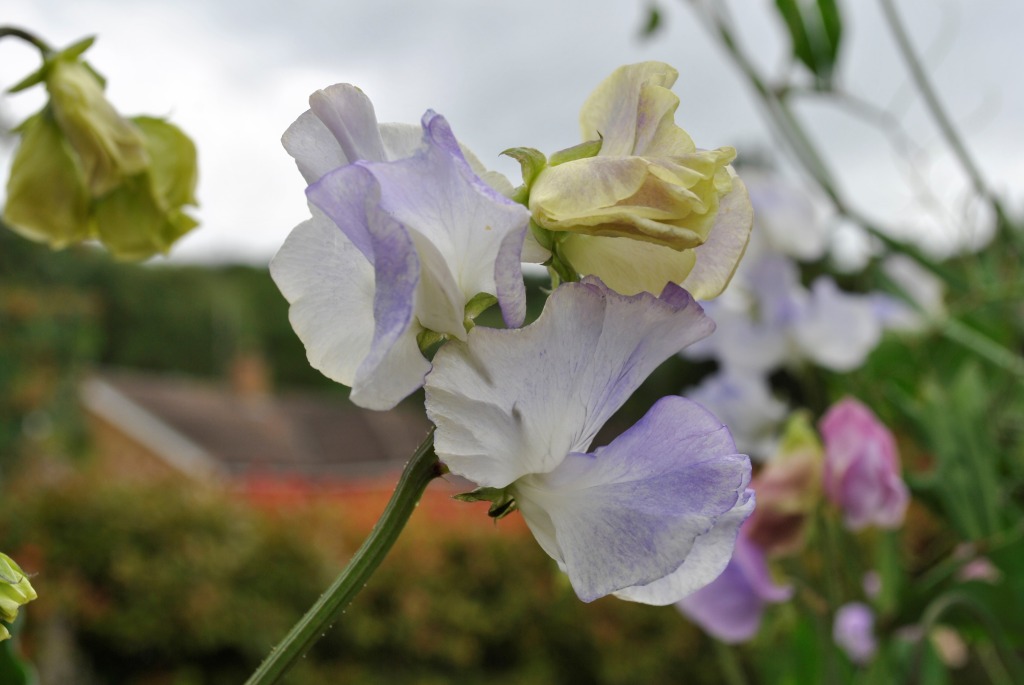
Sweet Peas are one of my favourites and there is simply nothing better than the scent of a bunch on the kitchen window cill. This one is ‘Betty Maiden’ which I trialled for Which? Gardening magazine in 2019 and have grown every year since from saved seed. Like most members of the pea family, it is self pollinating so you won’t find the bees swarming all over it like most open pollinated plants. Fortunately though, this means they will come true from seed, keeping the cultivar going forever.

I sowed seed of Phlomis russeliana many years ago which did well and have gradually self-seeded in various parts of the garden, mostly in places I don’t mind. They seem to like the company of other plants and squeeze themselves into tight spaces. For what is supposed to be a Mediterranean sun lover, they certainly like my clay!
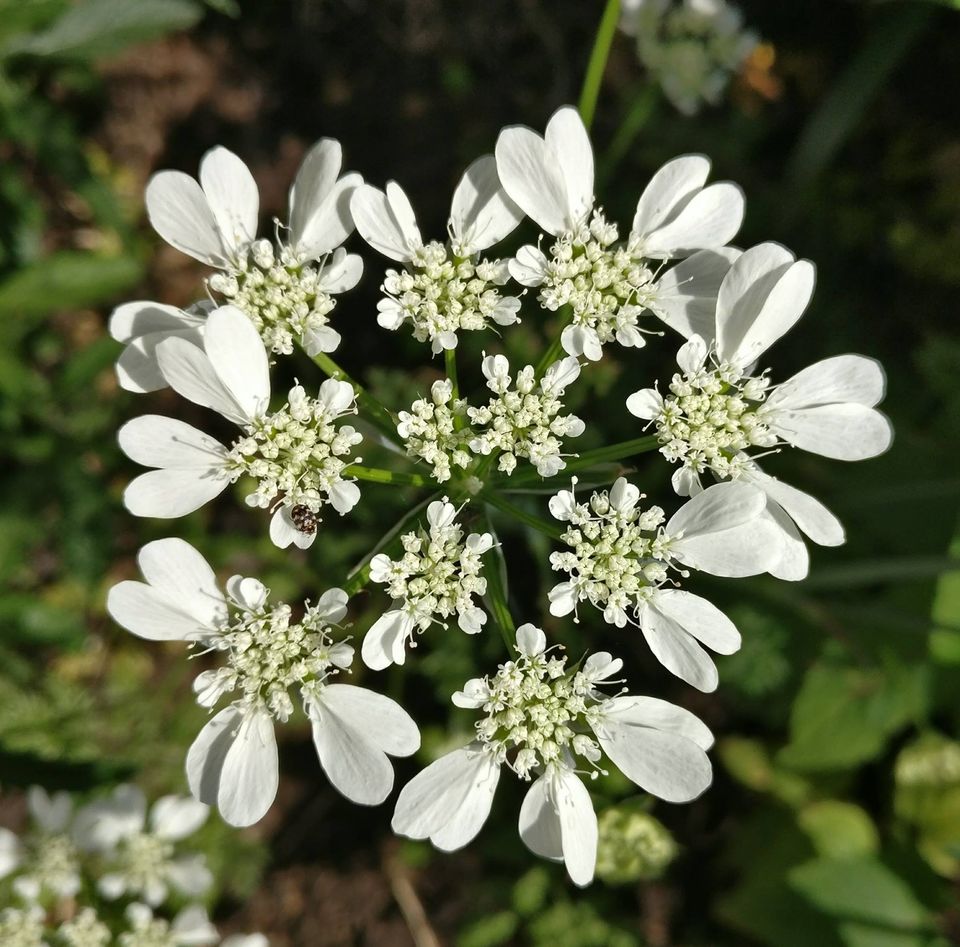
There is a lot of Ammi majus around at the moment which, to me, is just posh cow parsley. But this is different. Orlaya grandiflora, the White Lace Flower, is exquisite in it’s delicate design and composition. Like mini lace handkerchiefs on a creamy white flat umbellifer flowerhead. Nature at her beautiful best.
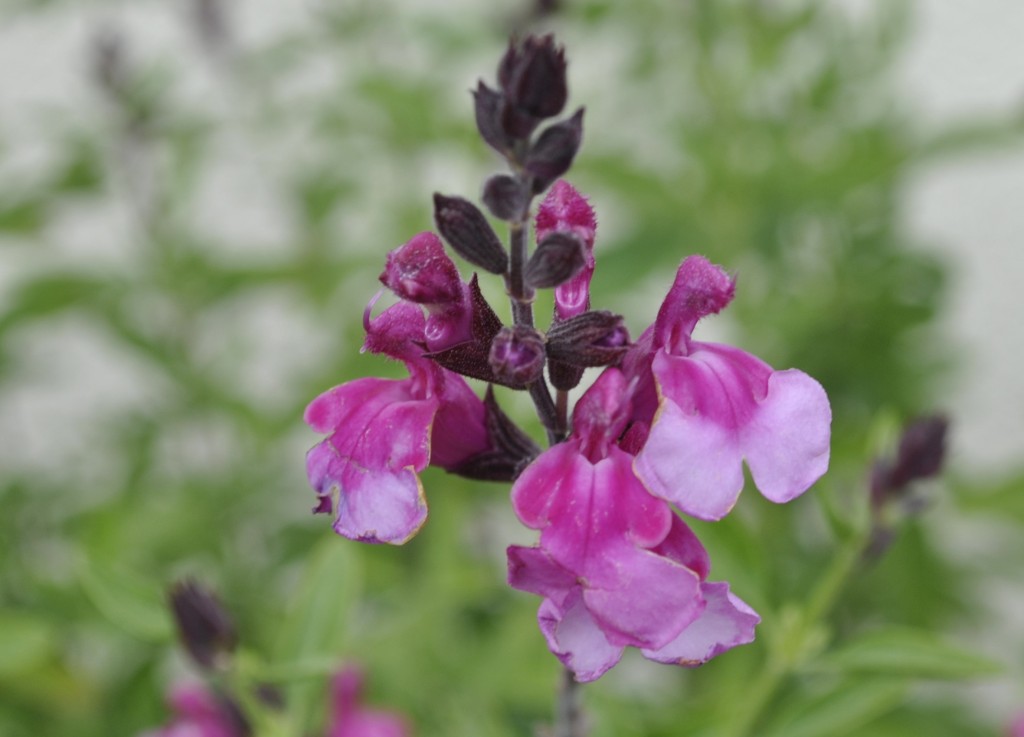
There are hundreds of shrubby salvias available and they are all good, but some are better than others. Personally, I think this is one of the best, Salvia greggii ‘Icing Sugar’ which is a double pink variety emerging from dark, almost black buds. Given to me last year by a friend, it is thriving in a pot at the moment while I try to find a space for it!
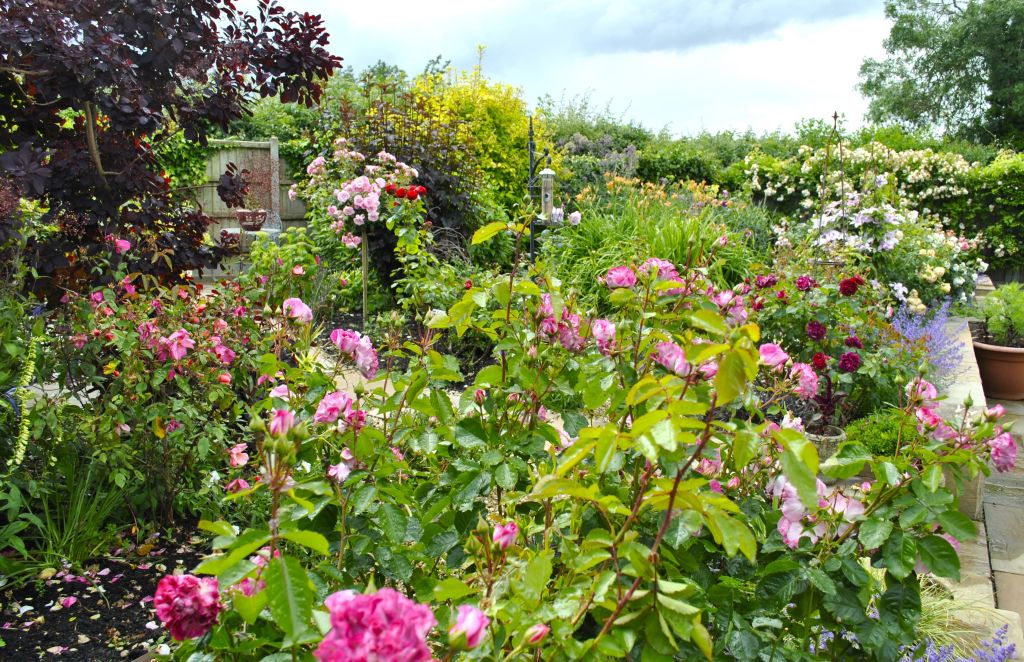
The rose garden is looking good so far this year. The rain has certainly helped, and I am using Uncle Tom’s Rose Tonic this year to try to ward off the dreaded blackspot. Only two sprayings so far, but they do look healthier than last year. I don’t use insecticides in the garden as the Blue Tits do a wonderful job of clearing the early aphids and caterpillars in May to feed their youngsters. And the Robins are already on to their second brood!
Have a great weekend
David

